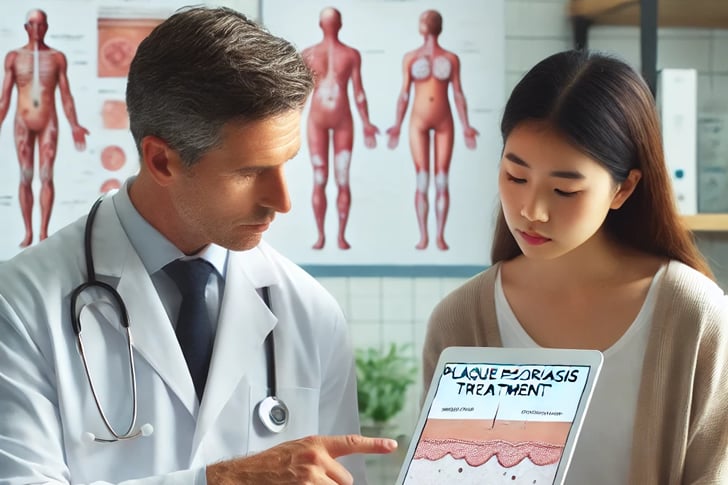How to Tell If You Have Plaque Psoriasis? A Comprehensive Guide
Plaque psoriasis is a chronic autoimmune condition that affects the skin, leading to raised, red, scaly patches. Understanding the symptoms and seeking proper diagnosis is crucial for managing this condition effectively. This guide provides a detailed look at how to identify plaque psoriasis, along with expert advice on when to seek medical attention.

Understanding Plaque Psoriasis:
- Definition: Plaque psoriasis is the most common form of psoriasis, characterized by thick, red patches covered with silvery scales.
- Causes: It is caused by an overactive immune system that speeds up skin cell growth.
- Common Sites: Typically appears on the scalp, elbows, knees, and lower back.
Symptoms of Plaque Psoriasis:
- Red Patches: Look for bright inflamed areas on the skin.
- Silvery Scales: Noticeable white scales atop the red patches.
- Dry Skin: The affected areas may crack and bleed.
- Itching and Pain: These areas can be itchy or sore.
- Thickened Nails: Psoriasis can also affect fingernails and toenails, causing them to thicken or crumble.
Diagnosis:
- Visual Examination: Most diagnoses are made by examining the affected skin.
- Biopsy: In uncertain cases, a small sample of skin may be examined under a microscope.
- Medical History: Information about family health history can be crucial.
How to Manage Symptoms:
- Moisturizing Creams: Regularly apply to keep skin soft and prevent cracking.
- Medicated Creams and Ointments: Typically contain corticosteroids or vitamin D analogues.
- Light Therapy: Involves exposing the skin to ultraviolet light under medical supervision.
- Systemic Medications: For severe cases, medications that affect the whole body may be prescribed.
FAQs:
- Q: Can plaque psoriasis be cured? A: While there is no cure, treatments can effectively manage symptoms.
- Q: Is plaque psoriasis contagious? A: No, it cannot be passed from person to person.
- Q: What triggers psoriasis flare-ups? A: Common triggers include stress, skin injury, and certain medications.
Comparative Table of Treatment Options:
| Treatment | Cost | Effectiveness | Side Effects |
|---|---|---|---|
| Topical Creams | Low | Moderate | Minimal |
| Light Therapy | Moderate | High | Skin Aging, Cancer Risk |
| Systemic Medications | High | Very High | Varies |
References for Further Reading:
Share this article 











Recent Comments